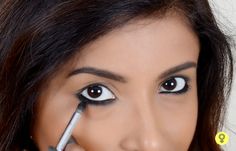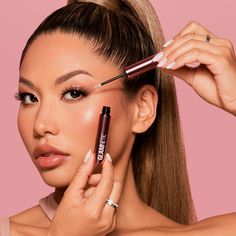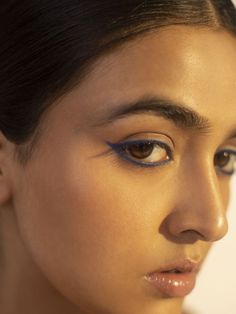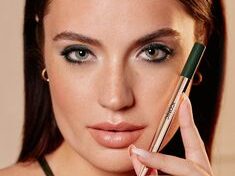Kajal Practical
Kajal, a versatile cosmetic product with deep cultural roots, comes in various types and formulations tailored to different preferences and needs. Understanding the different types of Kajal and mastering the techniques of application are essential for achieving the desired look while ensuring comfort and safety. In this class note, we will explore the diverse range of Kajal available in the market, discuss their unique characteristics, and provide insights into the best practices for application.

Types of Kajal:
- Traditional Kajal: Traditional Kajal, also known as Surma or Kohl, is made from natural ingredients such as lampblack, almond oil, and various herbs. It is often handmade using traditional methods passed down through generations. Traditional Kajal is revered for its authenticity, medicinal properties, and connection to cultural heritage.
- Commercial Kajal: With the advent of modernization and commercialization, commercial Kajal products have become prevalent in the market. These products are typically mass-produced and may contain synthetic additives and preservatives. Commercial Kajal comes in various forms such as pencils, gels, and creams, catering to diverse consumer preferences and lifestyles.
- Herbal Kajal: Herbal Kajal is formulated using natural ingredients known for their medicinal properties and skincare benefits. Ingredients such as aloe vera, neem, and almond oil are often used to soothe and nourish the delicate skin around the eyes. Herbal Kajal is preferred by those seeking a gentler alternative to conventional Kajal products.
- Waterproof Kajal: Waterproof Kajal is designed to withstand water and humidity, making it ideal for long-lasting wear, especially in hot and humid climates. These formulas are smudge-proof and resistant to sweat and tears, ensuring a flawless look throughout the day.
- Gel Kajal: Gel Kajal offers a smooth and creamy texture, making it easy to apply and blend. It provides intense pigmentation and long-lasting wear, making it a popular choice for creating bold eye looks. Gel Kajal is often packaged in retractable pencils or pots for convenient application.
- Smudge-proof Kajal: Smudge-proof Kajal is formulated to resist smudging and fading, providing a clean and defined look without the need for constant touch-ups. These formulas are ideal for achieving precise lines and intricate designs without worrying about smudges or smears.

Techniques of Application:
- Preparation: Before applying Kajal, it is essential to cleanse and moisturize the eye area to remove any makeup residue and ensure a smooth canvas. Using a gentle eye makeup remover or micellar water, cleanse the eyes thoroughly and follow up with an eye cream or moisturizer to hydrate the skin.
- Choosing the Right Kajal: Selecting the right type of Kajal is crucial for achieving the desired look and ensuring comfort and longevity. Consider factors such as the formulation, pigmentation, and wear time to determine the most suitable Kajal for your needs.
- Application to the Waterline: To apply Kajal to the waterline, gently lift the upper eyelid and glide the Kajal along the inner rim of the eye. Start from the inner corner and move towards the outer corner, using short, precise strokes for even coverage. Avoid applying too much pressure to prevent discomfort or irritation to the eyes.
- Tightlining: Tightlining involves applying Kajal to the upper waterline to define the eyes and create the illusion of fuller lashes. Using a thin eyeliner brush or a Kajal pencil, carefully line the upper waterline, getting as close to the lash line as possible. This technique enhances the appearance of the eyes without looking overly dramatic.
- Creating Winged Liner: For a more dramatic look, Kajal can be used to create winged eyeliner. Start by drawing a thin line along the upper lash line, extending slightly beyond the outer corner of the eye. Then, create a small wing by angling the Kajal upwards towards the end of the eyebrow. Fill in any gaps and refine the shape as needed for a precise and polished finish.
- Smudging and Blending: To create a smoky eye look or soften harsh lines, Kajal can be smudged and blended using a smudging brush or a cotton swab. Gently blend the Kajal along the lash line and outer corners of the eyes, gradually building up the intensity until you achieve the desired effect. Smudging adds depth and dimension to the eyes, creating a sultry and alluring look.
- Setting the Kajal: To prolong the wear time of Kajal and prevent smudging, it can be set with a matching eyeshadow or translucent powder. Using a small eyeshadow brush, gently pat the powder over the Kajal to lock it in place and absorb any excess oils. This step helps to enhance the longevity of the Kajal and maintain a flawless finish throughout the day.

Conclusion: In conclusion, mastering the art of Kajal application requires an understanding of the different types of Kajal available and the techniques best suited to achieve various looks. Whether you prefer traditional formulations rich in cultural heritage or modern iterations tailored to contemporary lifestyles, Kajal offers endless possibilities for enhancing the beauty of the eyes. By experimenting with different types of Kajal and refining your application techniques, you can unlock the transformative power of this timeless cosmetic staple.



